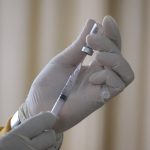In an article for npj vaccines, a group of experts present an approach to effectively and efficiently evaluate vaccines against antimicrobial-resistant (AMR) pathogens. The approach, which they call Reverse Vaccine Development, evaluates proof-of-principle efficacy “as early as possible” in a population with a high incidence of disease. The authors suggest that their method “may be the only way” to deliver life-saving vaccines to populations affected by AMR-pathogen diseases at incidences that are “typically low and unsuited” to Phase III efficacy trials. Here, we examine the proposal and invite you to share your reactions to it.
The burden of AMR and the need for vaccines
The paper states that a “recent estimation” of the burden of AMR on global human health indicates a “medical need comparable and likely larger than HIV and malaria”. In response, the vaccine community is targeting AMR pathogens. However, the development of these vaccines is “being hindered” by a “lack of understanding of their correlates of protection”.
“Vaccine development can be long, difficult, and costly. However, it becomes easier when a correlate of protection is known.”
The recent example of SARS-CoV-2 vaccine development speed is attributed by the authors not only to the “extraordinary” efforts of companies and authorities, but also to the knowledge of the “likely mechanism of protection”: “antibody to the spike protein preventing interaction with the host cell”. In contrast, for many of the human pathogens, including WHO’s list of global priority pathogens of antibiotic-resistant bacteria, the mechanism of protection “remains unknown”.
“Without a correlate of protection, late-stage clinical development is risky: many thousands of research participants may be needed for efficacy evaluations, and after many years of R&D and large expense, the trials may fail.”
Reverse Vaccine Development
The paper claims that, whilst developing a vaccine candidate against S. aureus, they identified a need for a “new vaccine development paradigm”, wherein data generation on efficacy and immune responses “should occur early”, instead of in Phase III. This starts with a Phase I/II study to assess safety, immunogenicity, and efficacy. If the vaccine is First-Time-in-Human (FTiH), a Phase I safety lead-in study could be needed to escalate dose. If there are no safety issues, the Phase II can “proceed to evaluate immunogenicity and efficacy”.
An important note is raised: the population used for the efficacy assessment must have a “high attack rate”. However, the attack rate may not be high in the population intended for registration. Thus, Reverse Vaccine Development “requires a population with a high attack rate” that is “available for study”. For example, the authors’ S. aureus vaccine candidate has such an available population: patients with a community acquired skin and soft tissue infection, for whom risk of recurrence is high.
“An efficacy evaluation of a candidate vaccine early in clinical development is of key importance. If the vaccine is found not efficacious, unnecessary exposure of subjects to the vaccine is avoided. If the vaccine is efficacious, correlates of protection can be explored.”
The success of Reverse Vaccine Development “depends on the number and validity” of the immunological readouts, and antibody titers in isolation are “likely insufficient”. The following “immunological parameters” are suggested:
- Systems serology – offers unbiased and comprehensive data for identifying previously unappreciated processes and mechanisms.
- Cellular responses – should be evaluated to understand the flavour of the induced T-cell response or if the vaccine increases the frequency of T cells specific for the vaccine antigens.
- Transcriptional profiling – provides a complementary and broad view of the immune response to a vaccine.
- Assessment of multiple immunological signals that correlate with each other – can increase the chance of identifying a signature of protection.
- Assessment of memory responses.
- Assessment of background immunity.
The authors suggest that Reverse Vaccine Development is “most suited” to the development of vaccines against pathogens for which a correlate of protection is not known, which hinders preclinical and/or clinical development.
What does this mean for the community?
The perspective concludes that the authors’ approach “assesses vaccine efficacy in the early phases” of development with the potential to identify a correlate of protection.
“Reverse Vaccine Development has the potential to facilitate the development of vaccines against AMR pathogens.”
How might this approach support your work or facilitate faster or more effective vaccine development? Vaccines for AMR pathogens were a key concern that arose at the Congress in Washington this April, so we expect to continue exploring this subject throughout the year with expert insights from our community. Don’t forget to subscribe to get these delivered to your inbox weekly.





